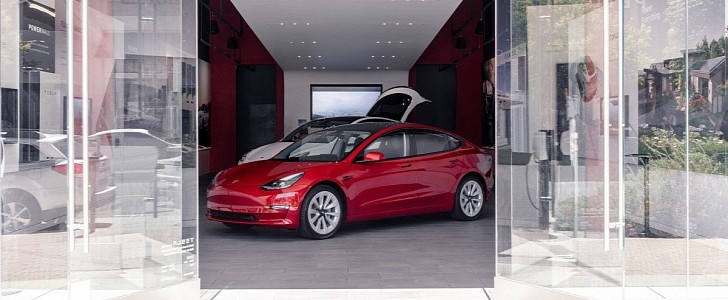With raw materials prices going up in light of the war in Ukraine and the sanctions imposed on Russia, it was just a matter of time before EV battery prices would also go nuts. Tesla reflected this trend quite early, as popular models in its lineup are now $1,000 more expensive because of that.
Most Li-Ion batteries used in electric vehicles are of the nickel-cobalt-aluminum (NCA) type. As the name suggests, these contain nickel and cobalt, both of which are expensive. Russia was one of the main suppliers of nickel, but the recent sanctions mean the rare metal is a lot harder to come by now. This instantly led to a price spike to unsustainable levels: a metric ton of nickel sells now for more than $100,000 which is more than double compared to the last week's prices.
Nickel is essential in Li-Ion batteries, allowing for more energy to be packed inside the cells. In the face of this nickel crisis, Li-Ion battery makers (and EV makers) have two options, raising the prices or switching to different chemistries that are nickel-free. Tesla uses both, as it appears NCA battery-powered models in its lineup are now $1,000 more expensive. At the same time, the base version of Model 3 and Model Y use lithium ferro-phosphate (LFP) batteries for some time already.
Model Y Long Range and Model Y Performance, as well as the Model 3 Long Range, are $1,000 more expensive now. The starting prices for these models are $59,990, $64,990 and $51,990, respectively. Interestingly, the Model 3 Performance price is still unchanged, at $58,990, although its battery still contains nickel. With the last price hike, the Tesla Model Y LR starting price has gained a whopping $10,000 in the past 12 months.
With more uncertainty coming from the war in Eastern Europe, we should expect further disruptions in the supply chains, as well as price increases. This is sure to cause some interesting developments in the EV battery industry, with LFP chemistry becoming more and more popular despite the lower energy density. In the meantime, the demand for electric vehicles will skyrocket, considering the oil prices have also gone mad.
Nickel is essential in Li-Ion batteries, allowing for more energy to be packed inside the cells. In the face of this nickel crisis, Li-Ion battery makers (and EV makers) have two options, raising the prices or switching to different chemistries that are nickel-free. Tesla uses both, as it appears NCA battery-powered models in its lineup are now $1,000 more expensive. At the same time, the base version of Model 3 and Model Y use lithium ferro-phosphate (LFP) batteries for some time already.
Model Y Long Range and Model Y Performance, as well as the Model 3 Long Range, are $1,000 more expensive now. The starting prices for these models are $59,990, $64,990 and $51,990, respectively. Interestingly, the Model 3 Performance price is still unchanged, at $58,990, although its battery still contains nickel. With the last price hike, the Tesla Model Y LR starting price has gained a whopping $10,000 in the past 12 months.
With more uncertainty coming from the war in Eastern Europe, we should expect further disruptions in the supply chains, as well as price increases. This is sure to cause some interesting developments in the EV battery industry, with LFP chemistry becoming more and more popular despite the lower energy density. In the meantime, the demand for electric vehicles will skyrocket, considering the oil prices have also gone mad.







